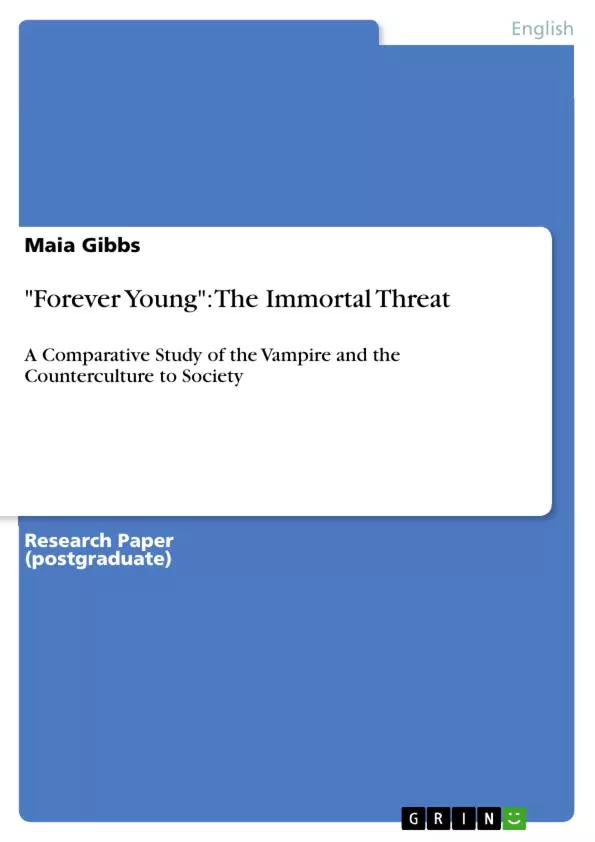The vampire has been an ever present figure in our folklore since the 1100’s, serving to reflect and almost embody the anxieties of contemporary society. Throughout history, tales of this fictitious character have become most prominent during times of social upheaval that pose a threat to mainstream society. The use of the character of the vampire in this way serves as a means to displace our societal fears, and symbolises the Other in society, mirroring our “ugliest fears and prejudices of the time.”
In this essay I will be exploring how the threat of the vampire as a fictional Other can help us to better understand the threat of the Other in reality, which in this case will be the counterculture.
Inhaltsverzeichnis (Table of Contents)
- The Immortal Threat of the Vampire & The Counterculture to Society
- The Threat to the Mentality of Society
- The Counterculture as a Threat
- The Vampire as a Threat
- The Threat to the Physicality of Society
- The Counterculture as a Threat
- The Vampire as a Threat
- The Post Modern Vampire
Zielsetzung und Themenschwerpunkte (Objectives and Key Themes)
This essay aims to explore the relationship between the fictional threat of the vampire and the real-world threat of the counterculture. It argues that both entities, through their ability to destabilize and challenge mainstream societal ideologies, serve as embodiments of societal anxieties and the "Other" within society.
- The counterculture as a reflection of zeitgeist
- The vampire as a symbol of the Other
- The commercialization of countercultures and vampires
- The role of physical and geographical signifiers in constructing identity
- The blurring of boundaries between fiction and reality
Zusammenfassung der Kapitel (Chapter Summaries)
The essay begins by exploring the historical and cultural significance of the vampire, highlighting its enduring presence in folklore and its ability to reflect contemporary anxieties. The chapter then introduces the concept of the counterculture, emphasizing its oppositional stance and its role in capturing the spirit of the times.
The essay is divided into two main sections, focusing on the threats posed by the counterculture and the vampire to both the mentality and physicality of society. The first section explores the hippie counterculture of the 1960s, examining its commercialization and its relationship to the theory of vampirism. It focuses on the symbolic locations of Haight-Ashbury and Transylvania, highlighting their unique ability to transform mentalities and blur the lines between fiction and reality.
The second section delves into the countercultural movements surrounding the AIDS epidemic, connecting the hysteria surrounding the virus to the fears of vampirism, exploring common themes such as contagion, colonialism, and loss of identity.
Schlüsselwörter (Keywords)
This essay explores the themes of the vampire, counterculture, zeitgeist, the Other, commercialization, signifiers, physical and geographical locations, fiction and reality, and the impact of both fictional and real-world threats on society.
- Quote paper
- Maia Gibbs (Author), 2010, "Forever Young": The Immortal Threat, Munich, GRIN Verlag, https://www.grin.com/document/169157



